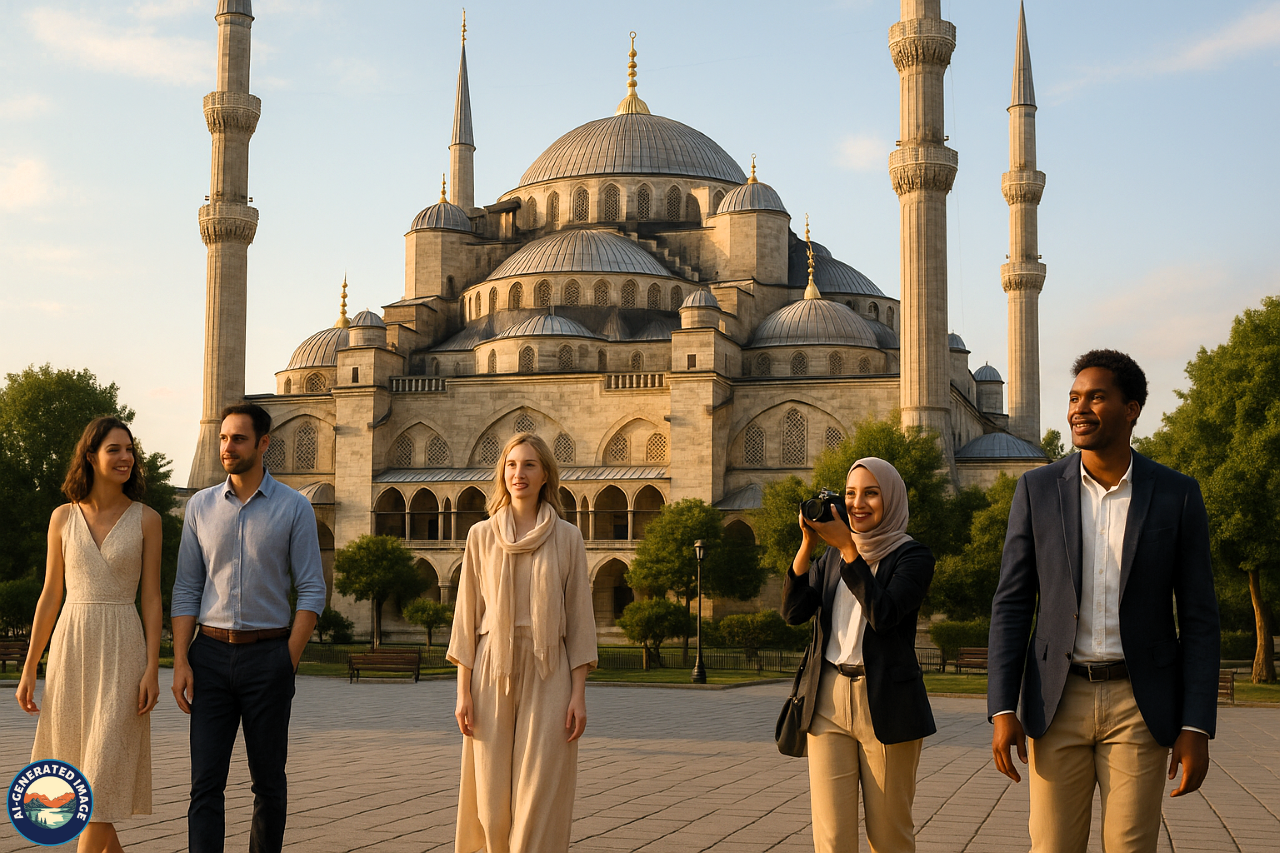Introduction
The Blue Mosque, also known as the Sultan Ahmed Mosque, is one of Istanbul’s most iconic landmarks. With its majestic domes, six slender minarets, and breathtaking interior adorned with blue Iznik tiles, the mosque is both an architectural triumph and a spiritual sanctuary. Situated in the heart of historic Istanbul, directly facing the Hagia Sophia, it stands as a testament to the grandeur of the Ottoman Empire and its rich Islamic heritage.
More than just a tourist attraction, the Blue Mosque remains an active place of worship, drawing millions of visitors and faithful followers each year. This article delves into the fascinating history, intricate design, cultural importance, and visitor experience of this magnificent mosque, helping you understand why it holds such a special place in Turkey’s identity and the wider Islamic world.
Historical Background
The story of the Blue Mosque begins during the reign of Sultan Ahmed I, who ascended the throne in 1603 at the young age of 13. Following a period of military defeats and declining Ottoman power, Sultan Ahmed sought to reaffirm the strength and piety of his empire. Unlike his predecessors, who typically funded grand mosques with war spoils, Ahmed I commissioned the mosque using the state treasury—a controversial decision at the time.
Construction began in 1609 and lasted until 1616. The mosque was built on the site of the Great Palace of Constantinople, symbolizing the spiritual and political transformation of the Byzantine capital into the heart of the Ottoman world. This deliberate placement also ensured that the mosque would stand directly across from the Hagia Sophia, the former Byzantine cathedral that had been converted into a mosque following the Ottoman conquest in 1453.
By the time it was completed, the Blue Mosque was the most ambitious religious structure of its era, serving as both a place of worship and a statement of imperial power. Sultan Ahmed I died just a year after its completion but was laid to rest in a mausoleum on the mosque’s grounds, forever linking his legacy to the majestic edifice he had envisioned.
Architectural Marvel
Design and Construction
The Blue Mosque was designed by Sedefkâr Mehmed Ağa, a distinguished student of the legendary architect Mimar Sinan. Drawing upon Sinan’s architectural principles while incorporating his stylistic innovations, Mehmed Ağa created a structure that fused Islamic, Byzantine, and classical Ottoman elements.
The mosque follows a square layout, with a central prayer hall surmounted by a vast dome flanked by semi-domes cascading down from the center. Surrounding the mosque is a spacious courtyard, echoing the grandeur of earlier imperial mosques.
Building the mosque was a massive undertaking. Thousands of artisans, laborers, and craftsmen were employed, and materials were sourced from various parts of the empire. The structure required careful planning to support the weight of its expansive dome and minarets while maintaining aesthetic harmony.
Iconic Features
The Blue Mosque’s most distinctive external feature is its six minarets. This was a bold and unprecedented choice—at the time, only the mosque in Mecca had six minarets. To resolve the controversy, Sultan Ahmed ordered a seventh minaret to be added to the mosque in Mecca, preserving its unique status.
Each minaret is adorned with balconies and intricate carvings, rising elegantly into the sky. The central dome, nearly 43 meters high and 23.5 meters in diameter, is supported by four massive columns known as “elephant feet.” These columns distribute the structural load while creating a sense of openness within the mosque’s vast interior.
The courtyard mirrors the interior layout, with an ablution fountain at its center and arcaded porticoes running along the perimeter. This balance between interior and exterior spaces contributes to the mosque’s visual and spiritual harmony.
The Mesmerizing Interiors
Blue Iznik Tiles
The interior of the Blue Mosque is where it truly lives up to its name. Over 20,000 handmade ceramic tiles from the town of Iznik decorate the walls and ceilings, most of them in various shades of blue. These tiles feature elaborate floral motifs—tulips, roses, lilies—and geometric patterns that create a mesmerizing tapestry of color and form.
Each tile was meticulously crafted by artisans using natural pigments and traditional Ottoman designs. The use of blue was not only aesthetically pleasing but also symbolic of tranquility and the divine. Over time, the color has faded slightly, but during the mosque’s early years, it would have dazzled visitors with its brilliance.
Stained Glass and Calligraphy
The mosque features over 260 stained-glass windows, which allow natural light to pour into the prayer hall. The way sunlight filters through the colored glass enhances the serenity and sacred atmosphere of the space.
Along the interior walls and arches are intricately inscribed Qur’anic verses, penned by the master calligrapher Seyyid Kasim Gubari. His elegant script complements the tilework and contributes to the overall aesthetic unity of the mosque. The mihrab, made from finely carved marble, indicates the direction of Mecca, while the minbar is used for delivering sermons during Friday prayers.
Dome and Prayer Hall
The central dome, a masterpiece of engineering and artistry, is supported by four semi-domes that extend the visual space of the interior. The dome’s intricate patterns and symbolic calligraphy draw the eye upward, creating a feeling of ascension and connection with the divine.
The vast prayer hall can accommodate over 10,000 worshippers. Hanging chandeliers, once lit with oil lamps, now use modern bulbs but retain their traditional appearance. These chandeliers originally held ostrich eggs to prevent cobwebs—a clever fusion of form and function.
Religious and Cultural Significance
Beyond its architectural grandeur, the Blue Mosque holds immense religious significance. It is one of the most important mosques in Istanbul, serving as a center of worship for the city’s Muslim population. Daily prayers are held five times a day, and during Ramadan and Eid, the mosque sees large congregations gather for special services.
As an imperial mosque, it once included not only a place of worship but also a complex of buildings: a madrasa (school), hospital, soup kitchen, and hospice. These institutions reflected the Ottoman belief in blending faith with social welfare.
The mosque’s presence across from the Hagia Sophia also carries symbolic weight. Together, they form a spiritual and architectural dialogue that reflects Istanbul’s layered history—from Byzantium to Constantinople to modern-day Turkey.
Visiting the Blue Mosque
Practical Information
The Blue Mosque is located in Sultanahmet Square, the historical heart of Istanbul. It is easily accessible by tram or on foot from major tourist centers.
-
Opening Hours:
-
Open daily except during prayer times. Midday and Friday prayers may limit access.
-
Entrance Fee:
-
Free of charge, though donations are encouraged to support ongoing maintenance.
-
Recommended Visit Time:
-
Early morning or just before sunset to avoid large crowds and capture the golden light.
Visitors are advised to check local prayer times before planning their visit, especially if they wish to explore the interiors.
Dress Code and Etiquette
As an active mosque, visitors are required to dress modestly. Women should cover their heads, shoulders, and legs. Headscarves are usually available at the entrance. Men should avoid wearing shorts or sleeveless tops.
Everyone must remove their shoes before entering the prayer hall. Shoe bags are typically provided for convenience.
Visitors are expected to behave respectfully, avoid loud talking, and not obstruct worshippers. Photography is permitted, but flash and disruptive behavior should be avoided.
Photography Tips
The Blue Mosque offers stunning photographic opportunities both inside and out. For exterior shots, the best views are from Sultanahmet Park or the Hippodrome.
-
Use wide-angle lenses to capture the domes and minarets.
-
Morning or golden hour light enhances shadows and textures.
-
Inside, natural light through stained-glass windows creates beautiful contrasts.
-
Avoid photographing worshippers up close to respect their privacy.
Nearby Attractions
Hagia Sophia
Directly opposite the Blue Mosque, the Hagia Sophia is a must-visit. Originally a Byzantine cathedral, later an imperial mosque, and now again a mosque, it showcases the fusion of Christian and Islamic architecture.
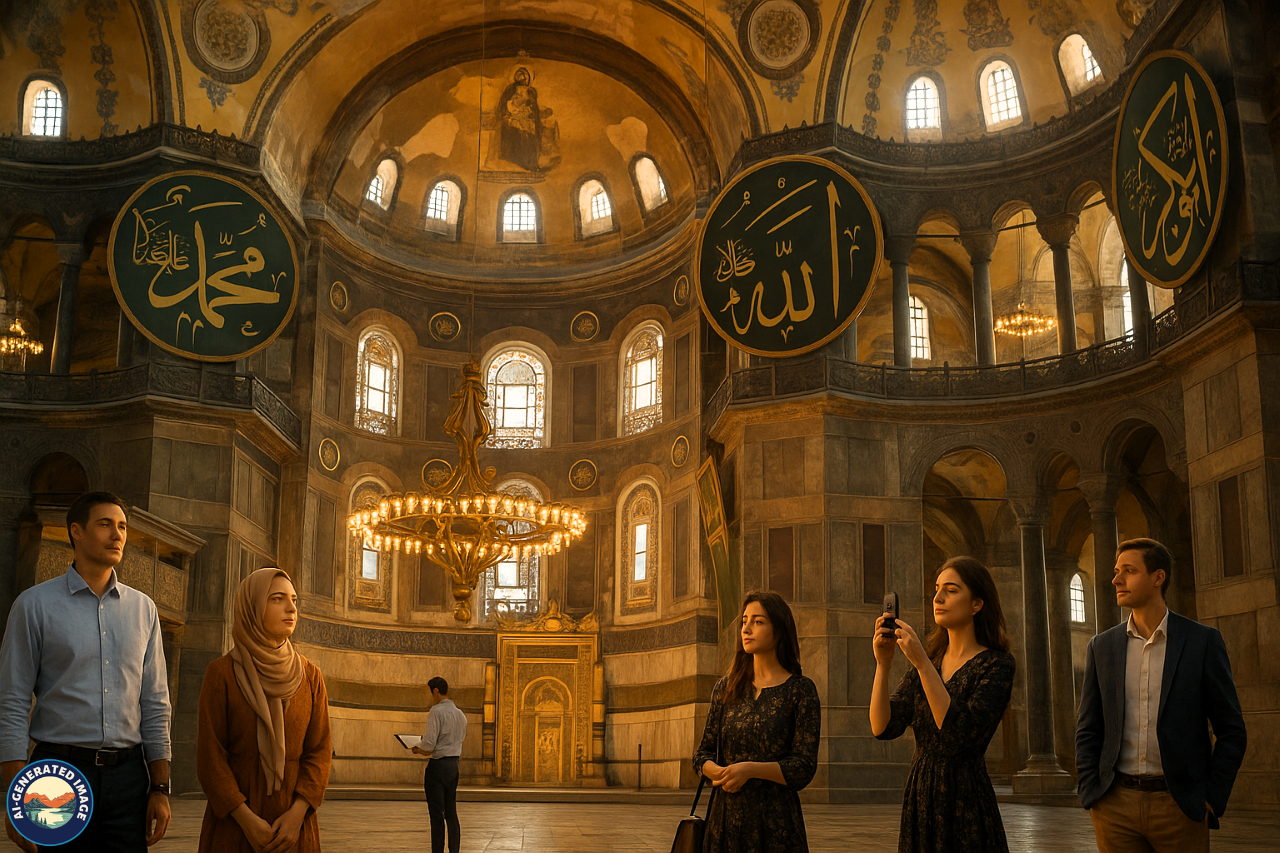
Basilica Cistern
An underground wonder built by the Byzantines, this vast water reservoir features marble columns, moody lighting, and mysterious Medusa heads.
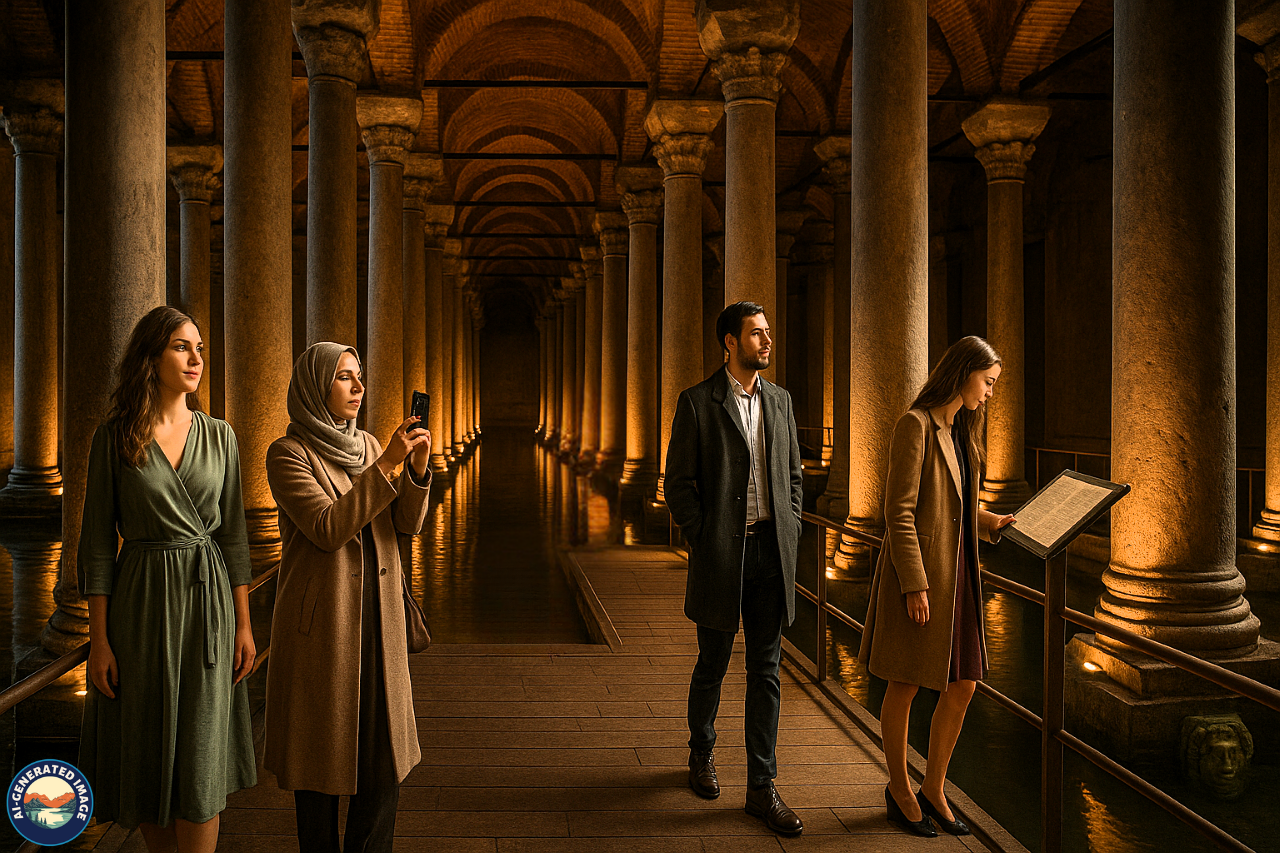
Topkapi Palace
Once home to Ottoman sultans, this sprawling palace complex includes ornate courtyards, imperial kitchens, and the famous Harem.
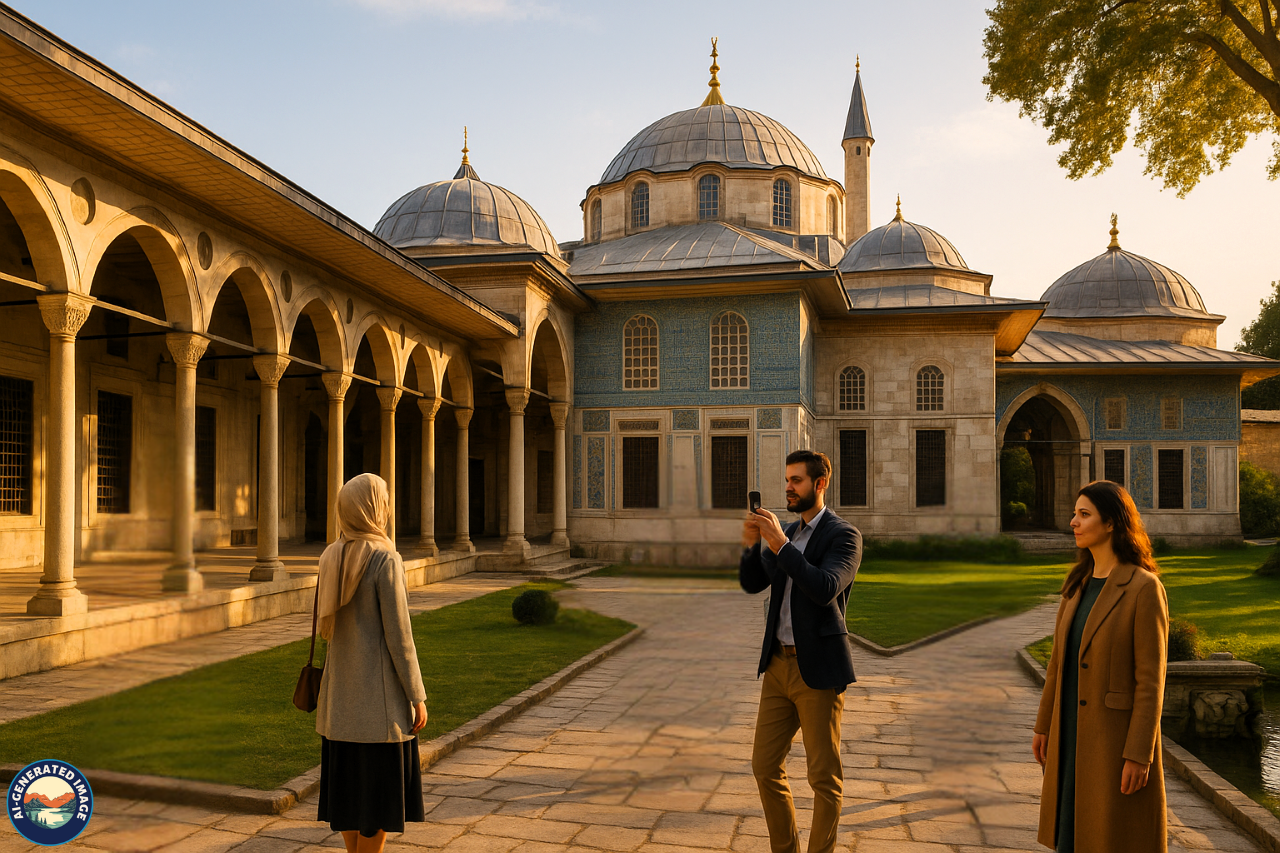
Arasta Bazaar
Located just behind the Blue Mosque, this quiet marketplace offers traditional crafts, carpets, ceramics, and souvenirs without the hustle of the Grand Bazaar.
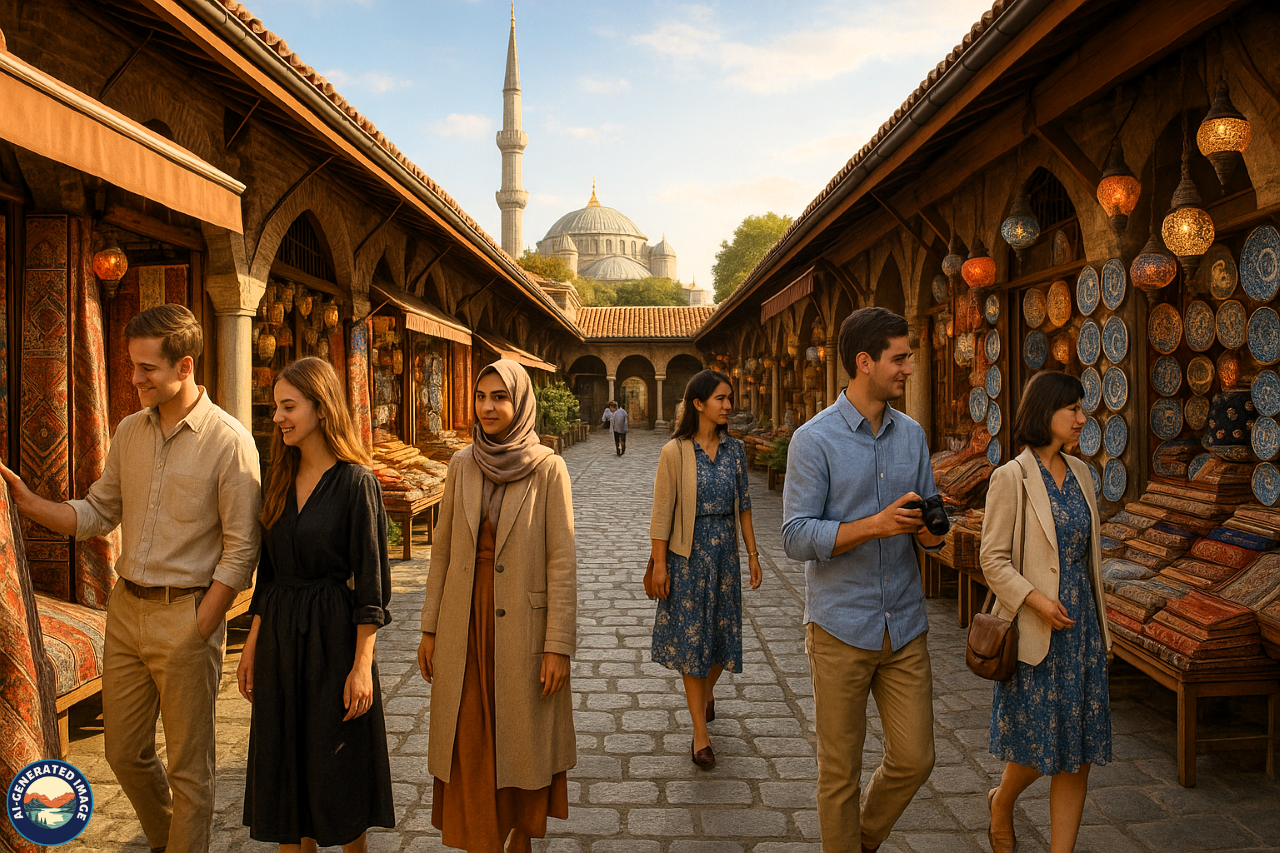
Sultanahmet Square
The ancient Hippodrome once stood here. Today, it features historic monuments like the Obelisk of Theodosius and the Serpent Column, providing a glimpse into the city’s Roman past.

Renovation and Preservation Efforts
Preserving a 400-year-old monument is no small task. The Blue Mosque has undergone several renovation projects, the most extensive of which began in 2017 and continued until 2023. These efforts focused on restoring tilework, reinforcing the domes, updating the lighting system, and repairing structural cracks.
One of the greatest challenges in restoration is maintaining historical authenticity while introducing modern safety standards. Specialized artisans and conservators work under the guidance of heritage preservation agencies to ensure that original materials and methods are respected.
The mosque is part of the Historic Areas of Istanbul, a UNESCO World Heritage Site, which provides international support and recognition for its preservation.
Cultural Symbolism and Global Influence
The Blue Mosque is more than a local treasure—it is a symbol of Islamic art and Ottoman legacy that resonates worldwide. Its iconic silhouette appears in travel guides, postcards, and films, symbolizing the spiritual and historical richness of Turkey.
Architecturally, it has inspired the design of several mosques globally, such as:
-
The Sultan Qaboos Grand Mosque in Oman
-
The Faisal Mosque in Pakistan
-
The Jamek Mosque in Kuala Lumpur, Malaysia
Its continued relevance in both religious and cultural contexts showcases how a single monument can bridge centuries and continents. For visitors, the mosque offers not just beauty, but a living connection to Istanbul’s layered past and vibrant present.
Conclusion
The Blue Mosque is a breathtaking embodiment of faith, artistry, and imperial vision. Rising gracefully over Istanbul’s skyline, it invites awe with its towering minarets, dazzling interiors, and serene spiritual ambiance. While millions visit each year to admire its beauty, it remains first and foremost a place of worship—a space where reverence meets magnificence.
Whether you are a history enthusiast, an architecture lover, or a spiritual seeker, the Blue Mosque offers a profound and moving experience. Its walls whisper tales of sultans and empires, artisans and prayers, all woven into the fabric of one of the world’s greatest cities.
FAQs
Why is it called the Blue Mosque?
The nickname “Blue Mosque” comes from the blue Iznik tiles that decorate the mosque’s interior. Though the exterior is not blue, the inside glows with various shades of blue and turquoise.
Can non-Muslims visit the Blue Mosque?
Yes, the mosque is open to non-Muslim visitors outside of prayer times. Visitors must dress modestly and behave respectfully.
Is there an entry fee to visit the Blue Mosque?
There is no entrance fee. However, voluntary donations are appreciated to support restoration and upkeep.
What is the difference between the Blue Mosque and the Hagia Sophia?
The Blue Mosque was built as an imperial mosque in the 17th century, while Hagia Sophia was a 6th-century Byzantine church later converted into a mosque. Today, both serve as active mosques and historical monuments.
What is the best time to visit the Blue Mosque?
Early morning or late afternoon is ideal for avoiding crowds and enjoying the best lighting for photography.
Are guided tours available?
Yes, guided tours are widely available and often include nearby attractions like the Hagia Sophia and Topkapi Palace.

